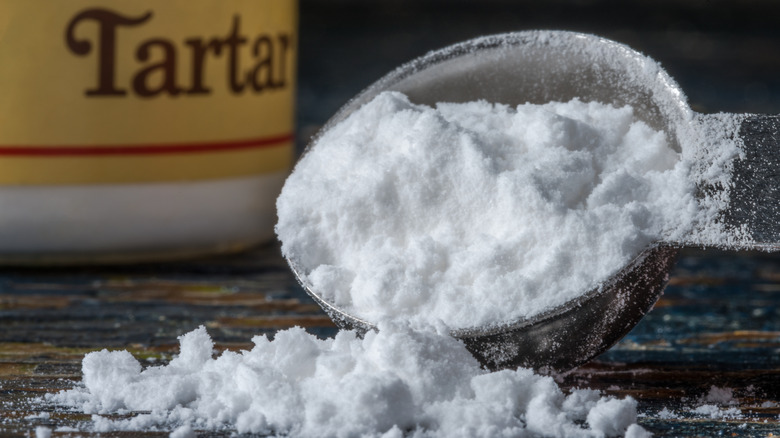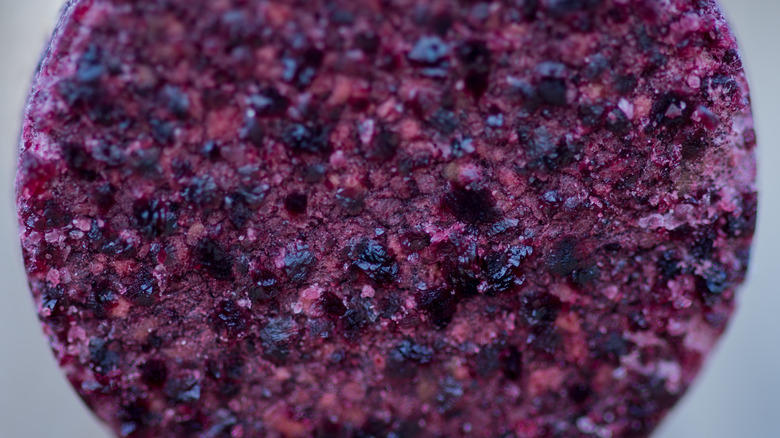Why It's Virtually Impossible To Make Cream Of Tartar At Home
Unless you bake on a fairly regular basis, you're probably not familiar with cream of tartar — and no, it doesn't have anything to do with tartar sauce — though chances are, you've tasted something that incorporates it, like a soft and chewy snickerdoodle cookie, a fluffy soufflé, or that perfect meringue.
Despite its name, cream of tartar, or potassium bitartrate as it's known scientifically, is actually a dry, white powder. Often used in baking, it serves three main purposes: it stabilizes egg whites, even at high oven temperatures; it prevents sugar crystals from forming, which is key for smooth frostings and icings and chewy cookies; and it acts as a leavening agent without the need for yeast, which is not something you really want in your cookies from a flavor standpoint, explains Wide Open Eats. It's a component of some forms of baking powder, notes McGill University. You can also use cream of tartar as a cleaning agent. What you can't do, however, is make cream of tartar yourself at home, and that's due to how it's formed.
Cream of tartar is a byproduct of the winemaking process
As Healthline explains, cream of tartar is essentially "the powdered form of tartaric acid," something that naturally forms during the winemaking process. During fermentation, the tartaric acid crystallizes and ends up as deposits in wine casks and barrels. The crystals are then scraped off and "creamed (or ground) into a powder" (via Akron Beacon Journal). These crystals, which are also known as "wine diamonds," can occasionally be found on corks and the bottom of wine bottles. But unless you're making large quantities of wine at home, you won't be able to make cream of tartar yourself, should you find yourself in need of some while baking or cleaning.
Luckily, there are some substitutes for cream of tartar that you may very well have at home. If you're baking, you can use baking powder to replace both cream of tartar and baking soda in a recipe. Vinegar and lemon juice can also be used to replace cream of tartar in some recipes, which Taste of Home recommends in a two-to-one ratio. Finally, you can use buttermilk or yogurt to replace cream of tartar, though some adjustments will need to be made to the liquid content of the recipe in that case. And if you do manage to find an old box of cream of tartar tucked way back in your pantry, go ahead and use it — assuming it's been kept away from moisture, cream of tartar pretty much never goes bad.

